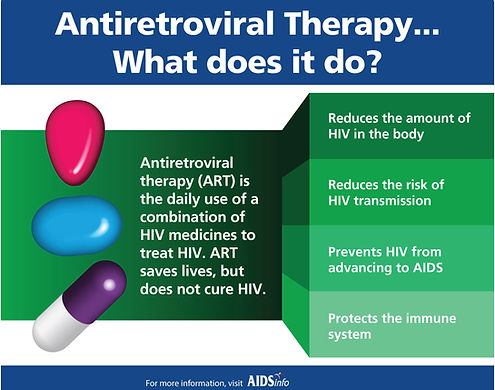PEP (Post-Exposure Prophylaxis Against HIV)
PEP (Post-Exposure Prophylaxis Against HIV)
No 71, Jalan Serangkai 4, Taman Bukit Dahlia, 81700 Pasir Gudang, Johor
Opens:
Monday to Thursday: 9 am - 7 pm
Saturday to Sunday: 9 am - 5 pm
Tel: +60128077720
+6072557720
KKLIU 3323/2022
Vaild until 31/12/2024

Schedule online. It's easy, fast and secure.

Schedule online. It's easy, fast and secure.
HIV TREATMENT
HIV is a double-stranded RNA virus. This is the only virus in existence with a double-stranded RNA in the world. Due to this peculiar nature of HIV, it can penetrate into the human immune host cell and incorporate its own data into the T-helper lymphocyte.
What is HIV VS AIDS?
HIV refers to the virus. A person infected with HIV does not mean that it is AIDS (Acute Immunodeficiency Syndrome). A person infected with HIV may not have any symptoms and can carry the virus while infecting other people through their high-risk behavior. During this phase: people will only know that they have HIV, only when they are tested for HIV. After carrying the virus for a long time the person can start to see certain symptoms like recurrent fevers, flu-like symptoms, acute skin rashes, recurrent herpes, or cold sores. HIV will slowly weaken the person’s immunity and allow other infections to get the opportunity to infect the person more often.
How does HIV Treatment work?
Classical HIV treatment involves two backbone drugs and one core drugs. In total it takes three drugs to make treatment against HIV to be effective.
What is backbone of HIV drugs?
The backbone of HIV drugs comprises of two NRTI (Nucleosides Reverse Transcriptase Inhibitor) drugs. These drugs compete for the substrate (cellular triphosphate) which the HIV virus needs to replicate. If this substrate (cellular triphosphate) is not available to the HIV virus then it is unable to replicate.
I will simplify it so that you can understand how the backbone drug works. Take for example the analogy of a rainforest. The big thick and dense trees in the forest are the NRTI (Nucleosides Reverse Transcriptase Inhibitor) drug, whereas the HIV virus is the grass on the ground. The tall-dense trees block out the sun and the grass has to compete with the tall-dense tree for sunlight, therefore you do not usually see grass in the forest because they fail to thrive without sunlight.
In conclusion, NRTI (Nucleosides Reverse Transcriptase Inhibitor) drugs compete against the HIV virus for “a binding substrate or binding site”. Without a binding site or lack of a binding site, the HIV virus cannot replicate.

Schedule online. It's easy, fast and secure.

What are core drugs against HIV?
There are many core HIV drugs based on its mechanism of action:
-
Fusion Inhibitor
-
These drugs are used to prevent HIV from entering the target host cell (T lymphocyte)
-
If HIV cannot enter the host cell then HIV cannot replicate
-
Eg: Enfuvirtide, Ibalizumab, Maraviroc
-
-
NNRTI (Non-Nucleosides Reverse Transcriptase Inhibitor)
-
NNRTI prevents the virus from incorporating into the human lymphocyte DNA.
-
If the HIV virus cannot incorporate itself into the human lymphocyte DNA, then the virus cannot replicate.
-
In a more simple analogy: HIV is like a sperm that needs to enter the ovum for fertilization but with NNRTI drugs, it blocks the sperm (HIV) from attaching and fertilizing the ovum.
-
Eg: Rilpivirine, Etravirine, Nevarapine, Efavirenz, Doravirine
-
-
Intergrase inhibitor
-
Integrase inhibitors (INIs) are a class of antiretroviral drugs designed to block the action of integrase, a viral enzyme that inserts the viral genome into the DNA of the host cell.
-
HIV here is like a KGB spy which, infiltrates into the USA and they integrate into the USA society. The intergrase inhibitors are like the FBI in the USA to prevent the KGB infiltration.
-
Eg: Bictegravir, Dolutegravir, Elvitegravir, Raltegravir
-
-
Protease inhibitor
-
Protease inhibitors are characterized by their ability to block the activation of an HIV enzyme called protease. The protease enzyme is involved in the synthesis of new viral particles, which can lead to the spread of HIV to uninfected cells.
-
Eg: Darunavir, Indinavir, Lopinavir, Ritonavir
-
What are the benefits of HIV treatment?
HIV treatment increases the survival of the immune cells of the human body, therefore, making the body less susceptible to other infections.
Multiple studies have shown that early testing and treatment will improve the quality of life and prevent mortality.
"Have a fruitful life with HIV treatment and return to normalcy"
